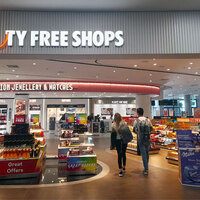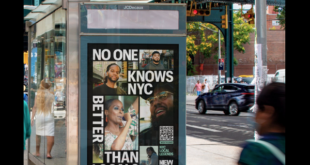[ad_1]
A recent survey by leading industry travel and travel retail research agency m1nd-set has unveiled the key elements influencing how customers journey through the airport and airport stores.
The latest research from the Swiss-based research agency, which was conducted among 5,000 travellers from all world regions, maps out the customer journey and how this is impacted, and can be further influenced, from pre to post travel. The research highlights the importance of
reaching consumers while still at home.
There is growing potential to capture shoppers online while at home, either during the travel booking process or between the booking and travel to the airport. According to the m1nd-set research a significant number of travellers – eight out of ten – plan their purchases prior to leaving for the airport. Just under a third plan their purchases specifically, meaning that when they arrive at the duty free shop, they know precisely which product or brand they wish to purchase. Just over half of international travellers plan partially, with some idea of what they want to purchase. In terms of when they plan their purchase, the research reveals that around 40% of shoppers say they think about their airport purchase before leaving home, while 15% say they plan this while on the way to the airport.
Pre-ordering for pick up on arrival at the airport or home delivery is also a growing phenomenon, presenting further opportunities to generate shop visits and conversion, as well as increasing basket size. The m1nd-set research reveals that the main reasons for pre-ordering are the
availability of special promotions (49%) and the offer of an attractive gift with purchase when pre-ordering online (30%).
Anna Marchesini, Business Development Head at m1nd-set, commented on the findings: “There is significant potential for increasing conversion by boosting communications around the duty free offer at the airport and building awareness among travellers around the pre-ordering services. Nearly 60% of shoppers expressed an interest in either pre-ordering their duty free purchases and home delivery, but only just over one third are actually aware of the pre-order and airport pick up service and only one quarter are aware of the home delivery services. This means efforts are required on marketing the online duty free retail offer at airports” Marchesini added.
The research also explores the aspects which drive passengers into the stores, while passengers are at the airport itself. Around 20% of store visitors said they entered the shop because the store looked inviting or attractive, 15% said they entered because they could see the products from outside and were lured in, while 14% said they went inside because they could see the promotions from outside the store. One in ten visitors said they entered the shop because of a special event or activation in or around the store.
According to m1nd-set, global shoppers in travel retail are expecting a much more digitalised experience in store. More than eight out of ten said they want to find out more information on products by scanning QR codes, while 8 out of 10 saying they want to choose fragrances on
demand via machines or robots and 78% said they would like to have digital screens with more information on products. 72% said they want to see Virtual Reality applications for testing make-up and fashion accessories, and 70% mentioned VR applications to discover more information
about products and services.
According to the m1nd-set Customer Journey research, one of the key influencers of the instore customer journey is the shop personnel. More than six out of 10 visitors to the duty free shops interact with the sales staff m1nd-set says, and just under 80% of the interactions produce a positive result with a purchase.
Talking on the importance of in-depth training, Marchesini added: “The customer journey continues post-purchase to the customer retention phase with repeat purchases and recommendations by the shopper to their peers. Specific training on diverse techniques and training on cultural keys are essential therefore, to ensure the customer journey is positive both in store and beyond.”
Marchesini continued: “Training on customer experience should not only focus on the sales process; it should also educate sales associates how to successfully identify various customer-types to anticipate more effectively how to approach the customer in the store. This can be achieved by enabling staff to become familiar with all the various customer segments, in particular those most common at their particular airport, airport terminal or cruise and ferry ship also, of course. The consumer behaviour will also vary according to the nationality and culture of the shopper, across these respective segments, so in-depth training on how to turn browsers into buyers by customer segment is highly recommended, particularly given the high impact rates that effective staff interaction has on the decision to purchase” she concluded.
You can read more of the news on source
 Travelsmart
Travelsmart



